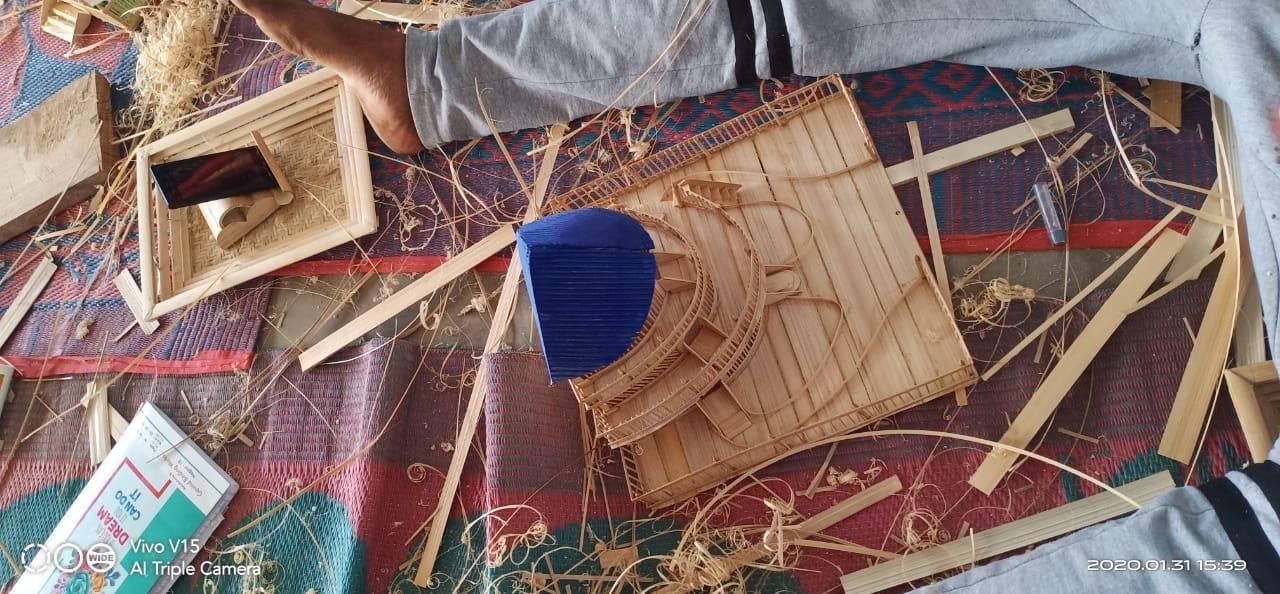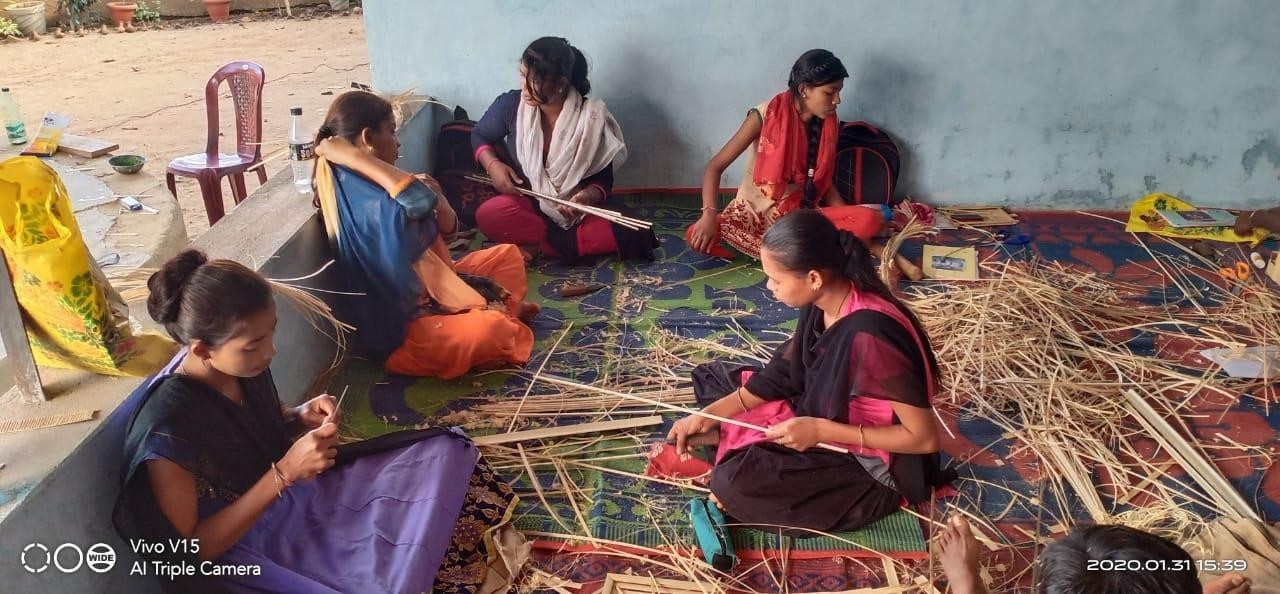IAS Officer Transforms Ramshackle Building Into Training Centre For Tribal Students
- “When we think of development, we see giant buildings as a marker for progress. But, after coming here, I realised that there is great value in conservation, being sustainable and having an equal society”, says #IAS officer Manuj Jindal. Deep into the thick, dense forests in Gadchiroli district in Maharashtra’s Bhamragad area, live the Madia Gonds. This endogamous tribal community is one of the country’s most under-developed tribes.
- This is why they are one of the 75 tribes that have been categorised by the Ministry of Home Affairs as Particularly Vulnerable Tribal Groups (PVTG)s in the country.
- Additionally, the region is a witness to clashes between the naxal groups and the armed forces, which further secludes it from the rest of the country.
- When Manuj Jindal was posted in Bhamragad in November last year, the 30- year-old IAS officer knew the challenge that lay before him. From the moment he took up his duties in the district, the Manuj has brought a sea of difference with his progressive and innovative initiatives.
- From upskilling the tribal people in art and crafts to working in the field of education, Manuj’s hands have been full, to say the least. And, the resulting transformation is astonishing to look at and more so because it happened in a short span of time.
- One of the biggest success stories has been the renovated tehsildar’s office. The IAS officer changed the face of the old, dilapidated building into a training centre for arts and crafts as a source of earning for its tribal students.
- Currently, the centre, which opened its doors mid-Jan this year, provides six-month training to the participants at a stipend of Rs 3000 per month. The learners get a portion from the sale of handicrafts they make.
- Additionally, the centre makes provisions for accommodation and food for them for free.
- Transformation pictures of the Tehsildar’s office which is now an art and crafts centre where the tribal students train Currently 36 learners between the ages of 18 to 45 are under training at the centre.
- “When people think about this region, they only focus on how underdeveloped or disturbed this region is. But, when you truly try to understand their culture, you realise that they are actually progressive in their beliefs. The men and women are treated as equal and there is no kind of caste system prevalent. There is so much to learn from these communities,” states Manuj.
Rising up to the Challenges to Enable and Empower
- Since the region is deeply forested, it is often very difficult for people in the region to access facilities in the hour of need.
- Furthermore, the region is malaria endemic and prevalence of sickle cell anemia is high, informs Manuj. Other than that, during monsoons, the region gets flooded as it has four rivers — Indravati, Pearl Kota, Pamul Gautami and Pandya — flowing through it, making it more cut off from the rest of the state.
- Bamboo craft being taught at the art centre Before Manuj began his work, he knew that it was going to be difficult to win the confidence of the people who have lived the majority of their lives amidst violence and political tensions. Creating channels of smooth communication was, indeed, going to be an uphill task for the newly appointed IAS officer.
- Yet, the adamant officer found a way in. “Through interaction, I found that they are very simple people who just wanted to come out of the cycle of poverty. So, I knew that I would have to show them quick results,” shares Manuj.
- In the early days of the posting, Manuj explored the area and spoke to the people, a strategy that helped him understand the landscape well. He also visited the tribals’ homes in the region and during these sojourns, the one thing that leapt at him was the streak of creative talent that ran throughout the community.
- Students in the art centre transform the wall with beautiful artwork.
- “I was amazed to see how the tribal community made use of every thing that we would normally throw away. Like, I saw a water bottle that was made by drying the body of a gourd. They made pipes using bamboo, and made musical instruments using wood. They also made beautiful objects using brass and bronze,” recalls Manuj of his first visits.
- Such a close connection with all things natural and the many ways the people were leading a sustainable life had a lasting impression on the IAS officer and was instrumental in the founding of the arts and crafts centre.
The Arts and Crafts Centre—from a Hovel to a Home for many
- One day Manuj was walking around his office compound when his eyes fell on an abandoned, dilapidated building.
- Students learn to craft objects from bamboo “My first thought was why was such a building not being put to any good use. It was on a big compound and I saw a potential in renovating the structure after looking at the official records of the building,” says Manuj.
- He then got in touch with Suresh Poongati, a local artisan who belonged to the Koyanguda village. Talented in Dokra art, bamboo work and wood work, Poongati shuffles his time between his village and Pune where he runs an art centre.
- “I knew he would be the perfect person who could teach the artisans as he understood them well. That is when I approached him and he really helped with his inputs which were instrumental in making the art centre a reality,” he says.Sculptures being stored at the art centre However, what the art centre really needed was people and the tribals in the region were already very apprehensive of the administration. But, Manuj had a plan in place. Proving how even the smallest of details can help make big changes, Manuj appointed managers who were bilingual.
- “We appointed a few field managers who would go and speak to the tribals. These people are known as ‘duibhasis’, as they can speak two languages — Marathi and Madia,” explains Manuj. The plan actually worked and the art centre with many people eagerly coming forward for upskilling after the duibhashis spoke to them.
- And now the results are visible to all.
- Take Ajay Malugawade, a 25-year-old from the Arewade village in Bhamragad taluka for example.
- Ajay is has been learning bamboo art at the centre. He finished his bachelor’s degree from the Gadchiroli University and also pursued a degree in Physical Education from Nagpur University. However, he had to discontinue due to family problems.
- “The reason I enrolled as a student in this arts and crafts centre is because I wanted to learn some skill. Once I finish this art course in six months, I will be able to do this at home and make money,” says a hopeful Ajay.
- Ajay’s mother is a farmer and he has two younger siblings who are still studying. His father passed away a few years back. “In a taluk like Bhamragad, setting up an art and crafts learning centre can help so many people in the region. I am really happy about what is being taught to us,” says Ajay contently.
Inclusive Development
- Manuj also realised that in terms of development indices, the district was lagging behind.
- As far as the field of education was concerned, Manuj saw that the literacy rates in Bhamragad stood at 54.71 percent, lower than the national average of 59.5 per cent. The parents in this tension-riven region were reluctant to send their children to school in fear of untoward incidents. Thus, the schools would see high drop-out rates.
- Beautiful tribal jewellery made by the students “When I reached here, I saw that the illiteracy levels are really high in the region and I really wanted to understand their point of view,” says Manuj.
- Manu first approached the private residential schools to talk to the teachers about the challenges they were facing. Upon speaking with the teachers he found that having to live away from their families, the teachers were very demotivated. Also, the poor network only made things worse, leaving them with very little incentive to do well in the circumstances.
- Therefore, to overcome this challenge, Manuj decided to host monthly meetings with teachers from across the eight residential schools in the region.
- “I think this is really helping because the communication channels are clear now. The teachers share with us about the new creative art or music related initiatives they want to start in the schools and we release the funds for that immediately. They also feel now that their grievances are being heard which is great,” explains Manuj.
- student is being trained in sculpting at the art centre.
- Furthermore, the IAS officer was also a part of an exhibition (mela) that was organised in collaboration with Artificial Limbs Manufacturing Corporation of India (Alimco), where the main objective was to make disability aids accessible to the differently-abled. “Here, there were measurements taken for the prosthetic limbs. These will be made available to them by the end of April or early May,” says Manuj.
- Just three months in, and having brought about positive changes in the region, what does Manuj hope for the future?
- “When we think of development, we see giant buildings as a marker for progress. But, after coming here and learning about these communities, I realised that there is great value in conservation, being sustainable and having an equal society. These are the values that I want to also take forward wherever I go,” says Manuj signing off.




